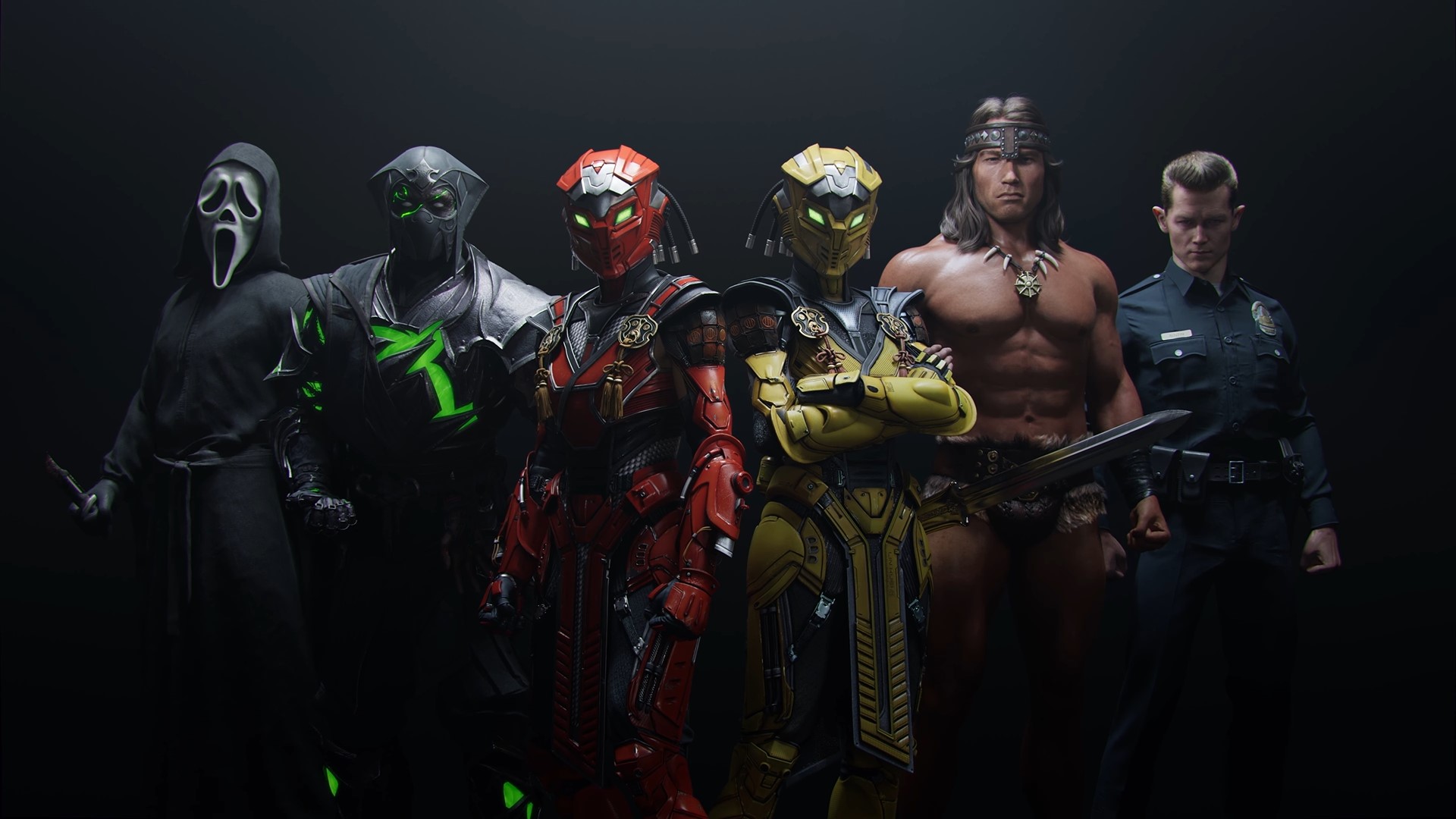
I was more than a dozen hours into Dragon’s Dogma 2 when I found my first ropeway — a transport system that would potentially save me time traversing the game’s vast open world by taking me to the skies. I turned a crank to get the ropeway’s wooden gondola moving, then passed said duty onto one of the Pawns in my party. Quite pleased with myself for discovering this new method of travel, I decided to soak in the views of the expansive desert below me until this journey’s end.
Then a giant, pissed-off griffin smashed into my gondola and completely wrecked it. My party and I plummeted to the valley below and were instantly killed. Man plans and Dragon’s Dogma 2 laughs.
The griffin incident is just one of many similar stories I’ve experienced in 30 hours with the cruel jokester god that is Dragon’s Dogma 2. I’ve been attacked by bandits in the midst of clearing a copse of goblins and thrown off cliffs by harpies. I’ve been stabbed, shot, poisoned, frozen, and burned by every type of fantasy creature. It’s challenging, but Capcom’s fantasy role-playing game is so unwavering in its design ideals, and so layered in intricate, interlocking game systems — it’s both fascinating and grueling to play.
It presents a world that feels like it’s already existed for eons before I ever set foot into it. It feels unconcerned with coddling or even welcoming me into its perilous world and fraught medieval politics. From lore to gameplay mechanics and even how the non-player characters function, Dragon’s Dogma 2’s lived-in world believably feels like you’ve been transported here as an outsider and dared to survive its harsh conditions.
:no_upscale()/cdn.vox-cdn.com/uploads/chorus_asset/file/25344966/_DD2__Dragon_01.jpeg)
Image: Capcom
In Dragon’s Dogma 2, I’m an Arisen: a chosen one who’s had their heart plucked out by a dragon and who, according to lore, is therefore the rightful ruler of the kingdom Vermund. But there is a usurper to the throne, a false Arisen who has been given ruling power as part of a shadowy conspiracy. Thankfully, some citizens and power brokers in Vermund quietly recognize my power as the Arisen and aid me on my journey to uncover the truth and expose the imposter.
Joining me on my quest are computer-controlled characters known as Pawns, sort of second-class citizens who fight alongside me. I have up to three Pawns at my side at any given time: a permanent one of my own creation and two others I can hire as part of Dragon’s Dogma 2’s faux-multiplayer component. As I play through the game, I can encounter new Pawns while walking across the kingdoms of Vermund and Battahl, or I can go Pawn shopping at locations known as Riftstones, where other players’ uploaded Pawns seek temporary quests from Arisens across parallel worlds.
The Pawn system adds to the organic, living-world feel of Dragon’s Dogma 2, where the game’s non-playable denizens generally go about their little lives. As day changes into night, shops close and more powerful monsters roam the landscape. Fruit and meat ripen and rot in my inventory as days pass. Along my journey, Pawns communicate with me and each other, sharing details they’ve learned from other worlds and other Arisen masters. They’ll tell me the location of treasure chests they’ve encountered in their worlds and guide me to them. When I make a discovery, one of my Pawns promises to share that news with other players. Pawns will even gossip about their former masters; one amusingly pondered out loud why her Arisen only hired women to join his group. Pawns come and go, and they’re easily swapped out to build a party that suits my current needs, but they all add to the feeling that this world is greater than my save file.
:no_upscale()/cdn.vox-cdn.com/uploads/chorus_asset/file/25344968/_DD2__Combat_01.jpeg)
Image: Capcom
I’ve grown quite attached to some of my Pawns, too. A mage I met early on became my go-to healer, but she lagged behind me and my main Pawn, a cat-man archer I created and named after my dog. Eventually, I had to part ways with my mage in favor of a stronger sorcerer, but I later reunited with her, only to find she’d become incredibly powerful and had switched vocations.
Dragon’s Dogma 2 boasts 10 vocations — character classes, basically — that offer a variety of playstyles, starting with archer, fighter, mage, and thief. As I progress and advance my vocation, I unlock new skills and new vocation variations, including the ability to use new types of weapons, both traditional weapons and magic in tandem, and more unusual options, like the trickster. The latter vocation — brand-new in Dragon’s Dogma 2 — doesn’t engage in combat one-on-one, but instead wields a censer to conjure illusions, causing enemies to fight each other, and supports Pawns to make them more effective in battle.
The trickster is just one component of game director Hideaki Itsuno’s vision to create a “single-player online party action game” in which players can “experience the enjoyment of getting to play as a group” without having to join up with or rely on other people. In simulating the feeling of a game like Final Fantasy 14 or World of Warcraft from a single-player perspective, the trickster fulfills the role of a healer or support character.
But I’ve always favored a more hands-on approach in action role-playing games like Dragon’s Dogma 2, the Monster Hunter series, and FromSoftware fare like Elden Ring. That’s why I’ve adhered to mostly sword-and-shield gameplay, and chosen to be in the thick of the fighting while being supported by Pawns. Relying on them is critical to success in this game, thanks to the sometimes muddy combat controls; there’s no hard lock-on targeting system in Dragon’s Dogma 2, and I’ve found myself whiffing many attacks while my Pawn allies pick up the slack.
:no_upscale()/cdn.vox-cdn.com/uploads/chorus_asset/file/25344970/DD2_Mystic_Spearhand.jpeg)
Image: Capcom
Combat encounters are thrilling, despite that looseness, thanks to the many swordplay tools at my disposal. As a fighter, I can equip skills that let me launch into the air to knock down flying succubi, or shield bash bandits to knock them down, then finish them off with a powerful stab. Different enemy types require different tactics, particularly the game’s giant enemies, like cyclopes, golems, drakes, and dragons. I can climb atop these massive beasts, a la Shadow of the Colossus, to target weak spots or imbalance them to topple them over. Battles like these are full of drama and hard-fought action, and they often happen organically. Often on my journey, I’ve been assaulted by an ogre or some other grand monster while simply roaming the landscape. Sometimes, I’ll have to run away — or the monster I’m battling will flee when it realizes I’m not worth the effort.
Traveling through Dragon’s Dogma 2’s world is perilous and often tedious. Fast travel across the game’s huge landmass is virtually nonexistent. A few towns I’ve been to are home to portcrystals, a landmark that I can teleport to using a very expensive and rare consumable stone. Otherwise, I make camp frequently in the wilderness to restore my party to full health. I travel on foot or in oxcarts, which move at glacial oxcart speed and only depart to specific locations. (There are ropeways that offer shortcuts, but you already know how those trips can go.)
And Dragon’s Dogma 2’s story, a mix of core narrative threads and side quests of wildly diverse significance, requires an immense amount of travel. Players who don’t enjoy lengthy hikes across monster-filled lands, like me, will find its reliance on this form of travel tedious. Others may find it sedating to take walks in the woods, see what’s beyond that hill, or simply enjoy getting caught in the rain. But fair warning: This is a game that respects your choices but doesn’t care much about your time.
However, the emergent stories that happen along the way sometimes make those trips worth it. Even when I somehow lost the plot about the false Arisen, the dragon I’ll need to face, and my efforts to reclaim my deserved throne in Dragon’s Dogma 2, I can still strongly recall the battles, surprise encounters, and even the smaller stories of townspeople I’ve interacted with on my journey. I’ll still see the game’s story through to the end, and I’ll get there at some point — just as fast as my feet will take me.
Dragon’s Dogma 2 is out March 22 on PlayStation 5, Windows PC, and Xbox Series X.








